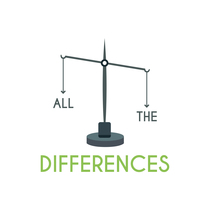The transaction for Invoice verification is a step in a Procurement situation for the vendors. This follows a goods movement which is a step when you get the goods from the vendors and then post them through MIGO. Thereafter, you are required to verify the invoice of the vendor along with the amount, and then you may go for the billing and payment that begins the FI process.
The booking of MIGO is done by the logistic department, where the material is received. The booking of MIRO is done by the Finance department.
MIGO and MIRO are part of procuring to pay cycle where MIGO means a Goods Receipt, here your stock will be increased and an entry will be passed to the intermediate GRIR account. While MIRO means Invoice Receipt, this liability is made against the vendor.
On a side note, the GRIR account is an intermediate account that shows the credit balances for the transactions for which you didn’t get the invoice, moreover, it will also show the credit balances for transactions where you have received the invoices, however, the goods aren’t received.
The difference between MIGO and MIRO is that MIGO is related to the goods movement activities, such as goods receipts from your vendor, or goods return to your vendor, etc. MIRO on the other hand is related to invoice verifications activities for bills that are raised from your vendor end. Another difference is that MIGO is booked by the Logistic department, and MIRO is booked by the Finance department.

Moreover, MIRO is a part of a program called SAP, which is a link between Finance and logistics. When a copy of the physical invoice is received from the vendor, they are booking MIRO entry in SAP.
What do MIRO and MIGO stand for?
MIRO means “Movement In Receipt out”, while MIGO is, “Movement In Goods Out”. Moreover, MIRO is a code for transactions for posting the invoice of the vendor along with the purchase order. It is used to record the invoice of the vendor. Whereas MIGO is used to process a receipt of the goods in order to confirm the receipt of the material or the services.
Moreover, there are two departments, the finance department, and the logistics department. The booking of MIGO is done by the logistic department, while the finance department books the MIRO. In addition, the material is actually received by the logistic department.
Here is a table for the differences between MIRO and MIGO.
| MIRO | MIGO |
| It means, Invoice Receipt | It means, Goods Receipt |
| MIRO stands for, Movement in Receipt out | MIGO stands for, Movement in Goods out |
| Booking of MIRO is done by the finance department | Booking of MIGO is done by the logistic department |
What is MIGO used for in SAP?

SAP is multinational software which is German company. It is used to develop enterprise software in order to manage business operations as well as customer relations.
MIGO is used in order to process a receipt of goods, this confirms the receipt of the material or the service.
A receipt of goods is very much populated with information from placing an order to stock transport of the order in SAP. moreover, the physical services or materials match the purchase order as well as the receipt from the vendor. Additionally, when the receipt of goods is processed, SAP generates a printed document.
Learn about how to process a Goods Receipt.
- Enter MIGO in the Command field, then press Enter.
- Select Good Receipt by clicking on the first field.
- Select Purchase Order by clicking on the second field.
- In the third field, enter the PO number.
If you are getting a stock transport order (STO) from another plant, then you will have to enter the STO number in the purchase order number field.
- In the fourth field, you will have to enter 101. 101 is the movement kind which is a representation of a goods receipt.
- Press Enter.
- After that, in the Delivery Note field, enter the number of the packing slips.
- In the Header Text field, you can enter any important information. For example, if the PO says that there are 5 boxes of material, but two are received damaged, then you can write 3 received. 2 were returned because of damage.
- Adjust the printing settings.
- Make sure that 101 is displayed in the Movement Type field.
- Click on the collapse of the Detail data area.
- Now, click on the OK checkbox which is beside each line item that is being received.
- After, you have to enter the quantity number which is received in the Qty which is in the UnE field.
Note: The line item quantity in the Qty in the UnE field defaults to the ordered quantity and only needs
to be entered if the received quantity is different than the ordered quantity. - Click on the ‘check’ field.
- Click on the “post’ field.
- With that, processing a goods receipt is finished.
Watch how to process a Good Receipt.
Can we do MIRO without MIGO?
For any process, all the important aspects are needed to complete the process, therefore MIRO can’t and shouldn’t be done without MIGO.
There isn’t even an option of doing MIRO without MIGO as it isn’t even possible. If you do MIRO without MIGO then only the half process is done, therefore MIGO is important.
Are MIGO and GRN same?
GRN is called Goods Receipt Note, it refers to the printout of SAP goods, while MIGO is the movement of goods and is related to the goods movements, for example, goods issue, the storage location of the goods, etc. GRN isn’t the same as MIGO, let’s say, it’s a part of MIGO.
MIGO: Goods Movements documents are created. It includes Goods Issue, Goods Receipt, and Stock Transfer between plants or companies. Every little thing that is related to the good is a part of MIGO.
GRN: Goods Receipt Note, denotes the printouts that are generated by SAP.
MIRO: Transaction for the Posting of Invoice which is based on PO, GR, Service Entry sheet. This creates a Financial Posting for the Vendor/Sender/Supplier.
GRN, MIRO, and, MIGO are three different steps and all three are equally important.
To Conclude

- MIGO means, Goods Receipt, where your stock increases and an entry is passed to the intermediate GRIR account.
- MIGO is booked by the logistic department
- The booking of MIRO is done by the Finance department.
- The logistic Department receives the material.
- GRIR account is an intermediate account that shows the credit balances for the transactions for which the invoice isn’t received and also shows the credit balances for transactions for which the invoices are received, but the goods aren’t delivered.
- MIRO is a part of SAP, which is a connection between finance and logistic.
- MIRO is short for, Movement in Receipt out.
- MIGO is short for, Movement in Goods out.
- MIRO is a transaction code for the posting of invoices which is from the vendor with the purchase order.
- MIGO is used in order to process a receipt of all the goods for the confirmation of the receipt which is of the material or the services
- As the receipt of goods is processed, SAP generates a printed document.
- MIRO without MIGO isn’t possible as both are crucial steps.
- GRN is a Goods Receipt Note and MIGO isn’t the same as GRN.

